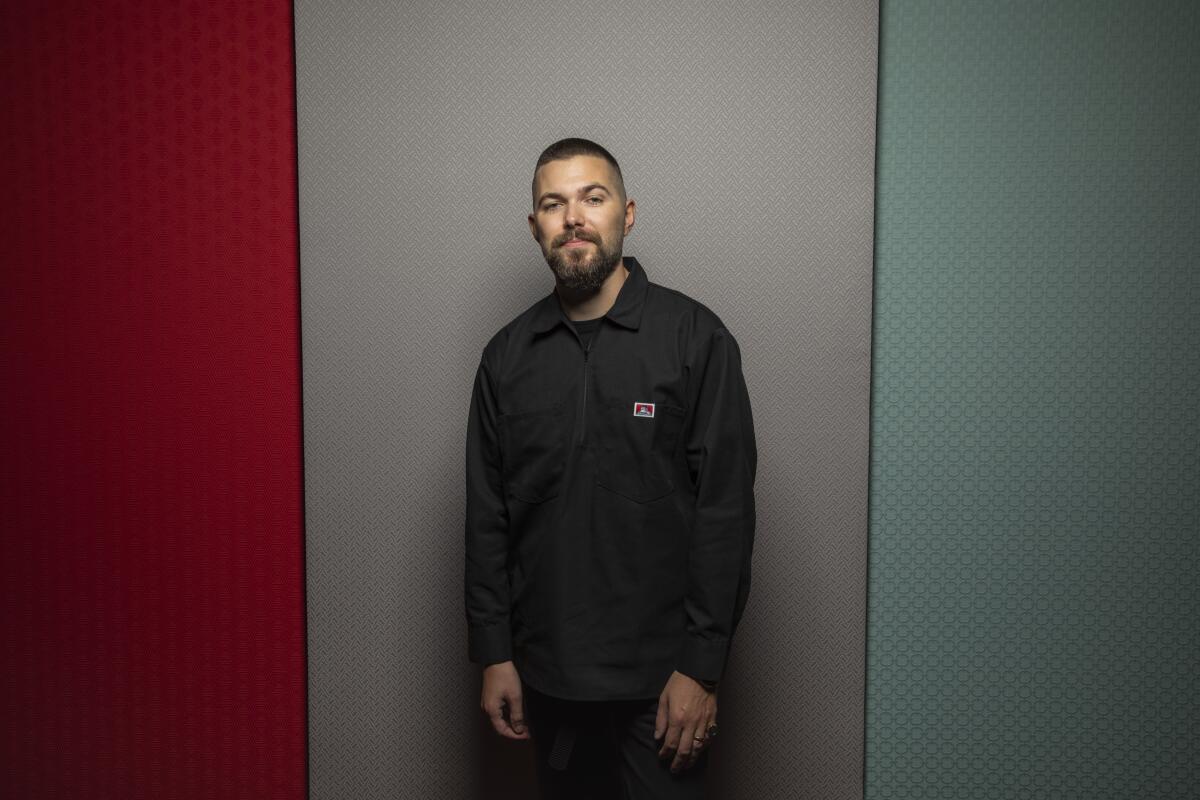Director Robert Eggers explores identity and madness in ‘The Lighthouse’

- Share via
Like many great films before it, Robert Eggers’ “The Lighthouse” came to life because another project specifically hadn’t. As the writer-director tells it, he was in the third year of trying to get “The Witch” off the ground, but no one wanted to finance a period horror indie. Ultimately, that Sundance standout would go on to earn critical acclaim and $40 million worldwide. At this early point, however, a depressed Eggers sat down for dinner one night with his brother, Max, who informed him he was working on a script about a ghost story and a lighthouse.
“That further depressed me, because I was very jealous of that idea,” Eggers admits in the humblest manner possible. “I immediately pictured this black-and-white 35-millimeter movie. This crusty, dusty, busty atmosphere, two figures hunched over a kerosene lamp with pipe smoke and all this. That’s not what he was working on at all. That’s what I wanted to do.”
Eventually, the siblings decided to collaborate on the screenplay that became one of the most talked about films on the 2019 festival circuit. A movie centered on the contentious working relationship between a first-time lighthouse operator with a mysterious past, Ephraim (Robert Pattinson), and his cantankerous obsessive superior, Thomas (Willem Dafoe). According to Eggers, the completed film is inspired by a true story about two lighthouse keepers in the United Kingdom, one older, one younger, who were stranded at their station during a storm.
Eggers notes, “I thought it could be an interesting way to have a two-hander that would explore identity and madness and could possibly devolve into some obscure places.”
Filming of the October release took place in Nova Scotia, Canada, which stood in for a fictional far-off-the-coast-of-Maine isle. With so much of the film taking place indoors and within the context of a rare 1.19 to 1 frame, Eggers felt it necessary to partake in rehearsals before filming began. That sat well with one of his actors, but not so much the other.
“I think that most film actors like to save [their performance] and I’m happy to indulge that,” Eggers says. “Willem doesn’t really need to save it, because he has more energy than anyone else on the planet. He can go 110% in rehearsals and then go 110% on camera, which is amazing, and then occasionally go 130%.”
As for Dafoe’s costar, Pattinson is an actor who prefers to find his character on set. That meant, as Eggers notes, “Yeah, Rob didn’t like the rehearsals. Willem got why I was into it for this particular piece and found it to be helpful. It’s Willem Dafoe’s lighthouse. Willem Dafoe wants to feel comfortable and at home there, and Rob, he’s uncomfortable in the lighthouse. It’s not like I deliberately tried to indulge in those tensions, but they just are there. And the camera photographs what it sees.”
Those tensions also helped Pattinson fashion one of the most nuanced and powerful performances of his career. In constructing his portrayal, the celebrated actor had lots of questions about his character or a scene for Eggers. Answers, it turns out, that Eggers says he didn’t necessarily want to share.
“A lot of times, Rob would ask me, ‘Is it this, is it that? Is it this, is it that?’ And I needed the ambiguities so the audience can ask the questions about his past,” Eggers explains. “So, I would often say, “Any of those things can work, but if you say the line the way you’re saying it a little faster, the audience is going to get what they need.’ I think that sometimes pissed Rob off.
“My brother and I were trying to write these misdirects and a lot of times a very important line that changes things drastically is not delivered in a [manner that signals] a big Hitchcock ‘here’s the moment.’ It’s just kind of like going and you might miss it. And I hope it works.”
The production also endured “cold as hell” temperatures and relentless wind that resulted in seawater spray that was so intense it stung the skin. It would have been one thing if Eggers and his director of photography, Jarin Blaschke, were using handheld cameras or a Steadicam. Their choice to use dollys and cranes wasn’t necessarily conducive to the environment, but it all serviced the story.
“If the weather was nice, we get to go inside and shoot inside. And when the weather was bad, we’re outside,” Eggers says. “I mean, was there augmented weather? Totally, but generally the serious weather was real. However, when Rob’s trying to escape with the boat, there is some movie magic there. There are practical effects. There’s not CG there, but [we’re going to make sure] he’s not swept up in a riptide and we lose Robert Pattinson, right? That would be bad.”
That would be bad, indeed.
More to Read
Only good movies
Get the Indie Focus newsletter, Mark Olsen's weekly guide to the world of cinema.
You may occasionally receive promotional content from the Los Angeles Times.










